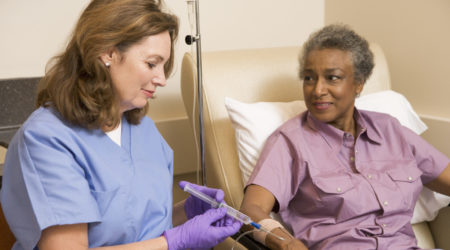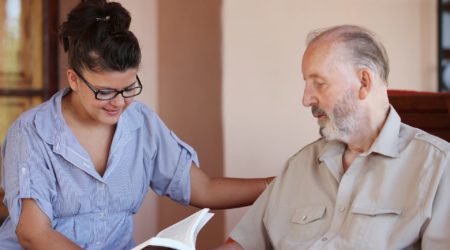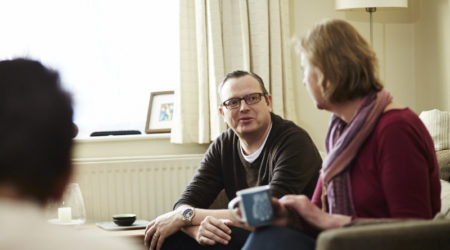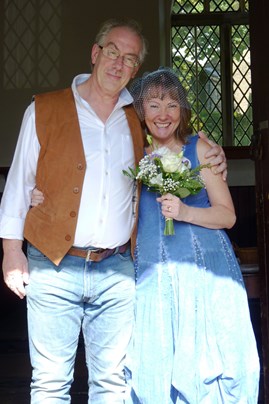
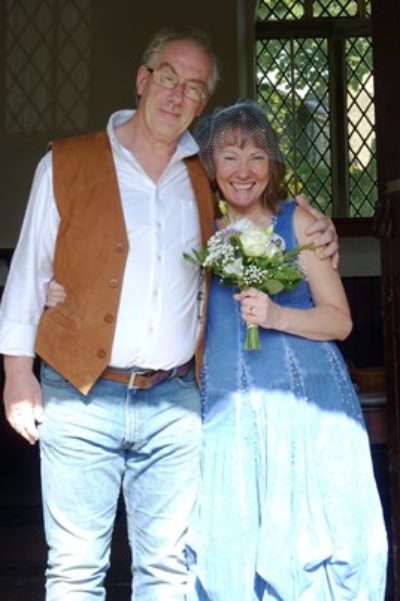
Jan
Jan's partner, Pete, was diagnosed with Stage 4 Adenocarcinoma in 2015.
On August 24th 2015 Pete became ill during a family holiday in Seefeld, Austria. Initial symptoms included intense itching, nausea, dark urine, and oily, yellow stools. We saw a local GP for blood & urine tests – analysed while we waited, then advised to take a taxi to another hospital, east of Innsbruck, for further tests.
Once there, Pete received more blood tests, urinalysis, and an ultrasound examination which revealed a suspected gall stone. However, staff were concerned that Pete didn’t have any pain. He was admitted onto a surgical ward where a CT scan was arranged.
Three days later, during an endoscopy procedure to remove the suspected gallstone, the true cause of his symptoms was discovered. A Whipple’s procedure was planned for a few days later, but further investigative scans and X-rays revealed lung lesions which were confirmed as secondaries by a biopsy, thus removing the option for surgery. Instead, Pete had a stent inserted to remedy his jaundice. He was diagnosed with Stage IV metastatic pancreatic cancer. We finally returned home to the UK 2 weeks after his admission to hospital.
Beginning treatment and receiving support
Once home we found ourselves under the care of a specialist hospital. Pete was fitted with a Hickman line, which made subsequent blood tests and treatment simpler and stress free. He was started on a fortnightly FOLFIRINOX regime, consisting of up to 6 hours on the treatment unit followed by a 48 hour pump infusion through his Hickman line at home, then back at out-patients 11 days later.
The vast experience and knowledge of the medical team was very reassuring and gave us much confidence that Pete was in good hands. There was a lot of support available in the form of relaxation, art classes, etc. which we haven’t needed but it’s good to know it’s there to tap into.
Our Professor described the FOLFIRINOX as a ‘punchy treatment’ meaning it’s very full on, some would call it aggressive, and we weren’t sure how Pete would cope with the regime. He was very sick after the 1st cycle but subsequently was put on a cocktail of anti-emetics before, during and after treatment and was never sick again for the remainder of his treatment. He experienced fatigue which developed over the treatment period and some neuropathy but coped by pacing himself and not overdoing things.
A break from treatment
Pete’s mid treatment scan revealed his primary had shrunk and the secondaries were responding, which was great news. He finished his 12 cycles of FOLFIRINOX in April 2016 by which time his primary tumour had shrunk further and his lung secondaries no longer showed on the CT scan. A better result than expected.
We now faced a 3 month break from treatment before the next scan. Pete felt well enough to return to work about 4 weeks after chemotherapy finished which he did on June 1st. We also decided to travel but were concerned about insurance costs. Fortunately the hospital recommended an excellent insurance company who covered Pete, including his pancreatic cancer, at a very reasonable cost. We holidayed in Switzerland, Gibraltar and Spain.
His 3 month follow up scan in July indicated the secondaries had returned, albeit smaller than at diagnosis. The consultant recommended a further scan in October when we may expect to restart chemotherapy.
As I write this it is exactly 1 year since his diagnosis and life is good. He remains at work and is enjoying this. He is really well in himself and enjoying life. Pete and I had married 4 weeks after his diagnosis. As we approach the anniversary we never expected to see, we feel blessed to have enjoyed quality time together: travelling, trying new things, living life more fully than before diagnosis and grateful for each day.
August 2016
Update June 2017
Pete lost his battle with cancer on March 29th this year, 19 months after diagnosis. His good initial response to treatment gave him a year of good health during which we travelled extensively. I nursed him at home until his death. The fantastic support from our district nurses and GP made this possible and, given the awfulness of the diagnosis, there is nothing we would have changed.
